When it comes to mountain bikes, there are two main types: hardtail vs full suspension mountain bike. Hardtail bikes have a rigid frame with no rear suspension, while full-suspension bikes have a frame with both front and rear suspension. So, which is better in 2023?
There are pros and cons to each type of bike. Hardtail bikes are typically lighter and easier to pedal, but they can be less comfortable on rough trails. Full-suspension bikes provide more comfort and control on rough terrain, but they can be heavier and more difficult to pedal. Ultimately, it’s up to the rider to decide which type of bike is best for them.
Hardtail Mountain Bikes
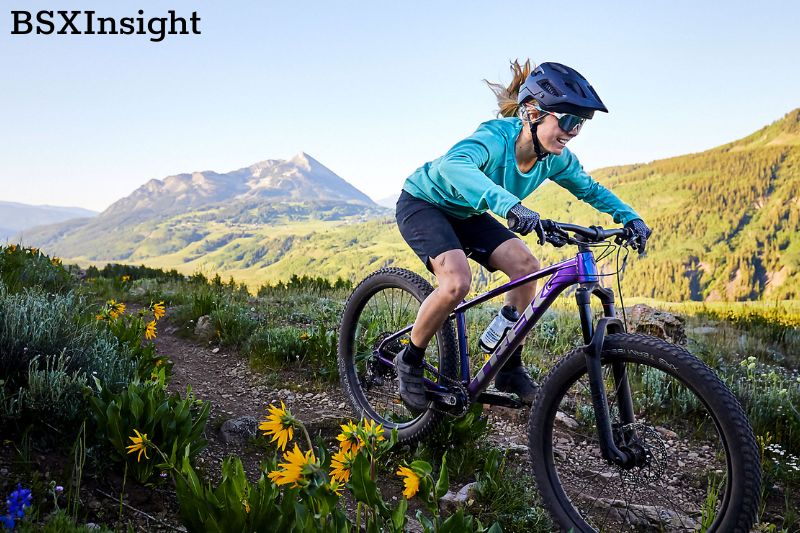
Any hardtail is significantly less expensive to acquire if you are worried about the cost of future bike maintenance or live in an area where muddy rides are common. If you frequently ride in muddy conditions, full-suspension bikes need shock servicing and linkage bearing replacements, which can quickly drive up the cost of ownership.
The hardtail is also more flexible for riders who utilize their mountain bike as an all-purpose cycling machine. It creates a significantly better commuter bike and is simple to modify for touring.
If they have the right geometry and a good suspension fork, hardtails can be entertaining on slightly tricky descents. The truth is that a hardtail will be difficult on your body if you have any past injuries, lower back problems, or knee/ankle problems.
Full-suspension bikes can muffle trail chatter in addition to absorbing heavier impacts when you land a jump or drop-off wrong, protecting your ankles and hips from injury. If you’ve ever driven on a rutted gravel road, you’ll be familiar with how tiring rear-wheel terrain vibration can become after an hour.
Full-suspension Mountain Bikes
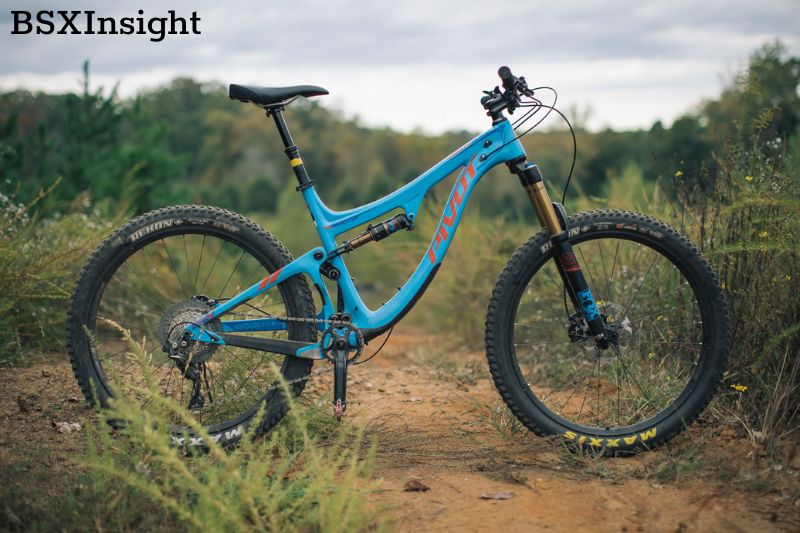
On any terrain, mountain bikers who are under the stress of an injury will always feel more at ease riding a full-suspension bike. The full-suspension mountain bike offers a much safer route to advancement for fitter riders who want to improve their skills and explore more difficult tracks.
Any rider’s worst nightmare is going over the bars (OTB), and on steep technical terrain, the risk is greatly increased with hardtails.
There is no suspension action in the back to stop the balance point momentum of a potential OTB moment once the front fork travel is exhausted. Full-suspension bikes are less prone to buck a rider over the handlebars and are more forgiving.
The difference between a hardtail and a full-suspension bike is negligible if you live in a region where the majority of the trails are supple and flowing.
A hardtail is recommended for riders who must pedal a significant distance to reach their trailhead since it requires less maintenance and is better at transferring energy into forward speed.
On any hardtail, though, rocky and rooty trails can present a little bit more of a problem. Even a short-travel full-suspension bike provides significantly more control and confidence in this situation.
While studying smooth skill tracks on a hardtail will likely help you acquire more “perfect” jumping and drop-off techniques, a full-suspension bike will be easier on your body after taking repeated blows.
A hardtail is the best option if you are in excellent physical shape, enjoy riding in the winter, frequent buffed trails, and prefer to use your mountain bike for both commuting and other purposes.
The dual-suspension mountain bike will be more comfortable and quicker on all grades of technical singletrack for riders who live close to a trailhead or don’t mind traveling to trail destinations. This is especially true if you are dealing with physical ailments brought on by aging or injuries.
Get a hardtail if you have a set spending limit, ride smooth trails in all weather, and log significant annual mileage.
Do you like the thought of speeding through a rock garden and striking some little drops? You’ll benefit more from the dual-suspension option, but you’ll pay more for a bike that is noticeably heavier.
Boardman MTR 8.6 Full-suspension vs MHT 8.9 Hardtail
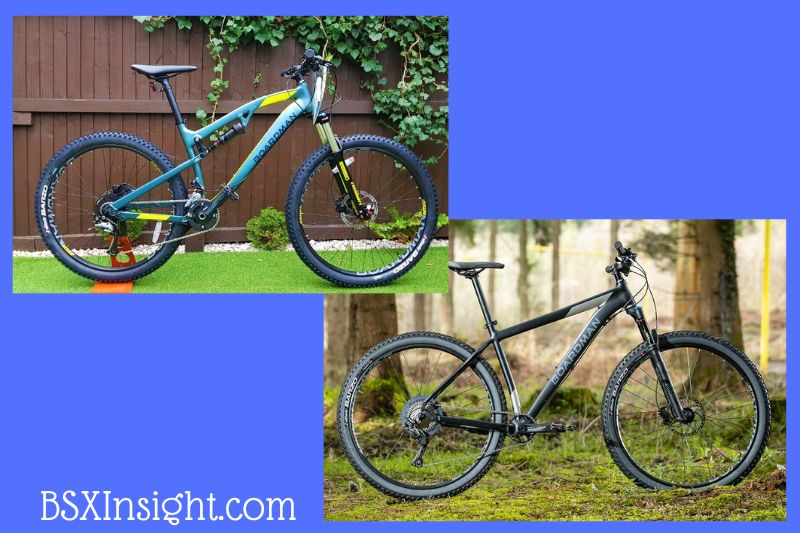
In the 1980s, when mountain bikes were still in their infancy and had no suspension beyond the air in their tires, Chris Boardman first gained fame as a successful road rider.
Since the middle of the 1990s, two types of mountain bikes have dominated due to rapid technological advancement.
Hardtails have a stiff back end for ease of use and efficient pedaling with a suspension fork to smooth out bumps that might otherwise jar the rider’s upper torso and arms.
In order to improve traction and smooth out the ride, full-suspension bikes contain an additional spring and damper between the rider and the rear wheel.
Hardtails are typically more effective for riders who log many miles and don’t want to give up leg strength for rear-wheel movement. Full-suspension bikes provide additional cushioning and traction for more active riders who are landing jumps, hitting large bumps at high speeds, or railing curves.
This makes a lot of sense, but the truth is more complex. Most riders seeking pure off-road speed now opt for a full-suspension mountain bike, as seen by a quick glance at contemporary XC World Cup bikes.
Although top-tier full-suspension XC bikes cost orders of magnitude more than £1k, many racers have unlimited budgets. What, then, do Boardman’s MTR and MHT each do well at a more affordable price?
The Frames
The MHT sports a very clean-looking, smooth-welded front triangle that, from a distance, might nearly pass for carbon fiber, save from the fact that one frame has a shock screwed into it.
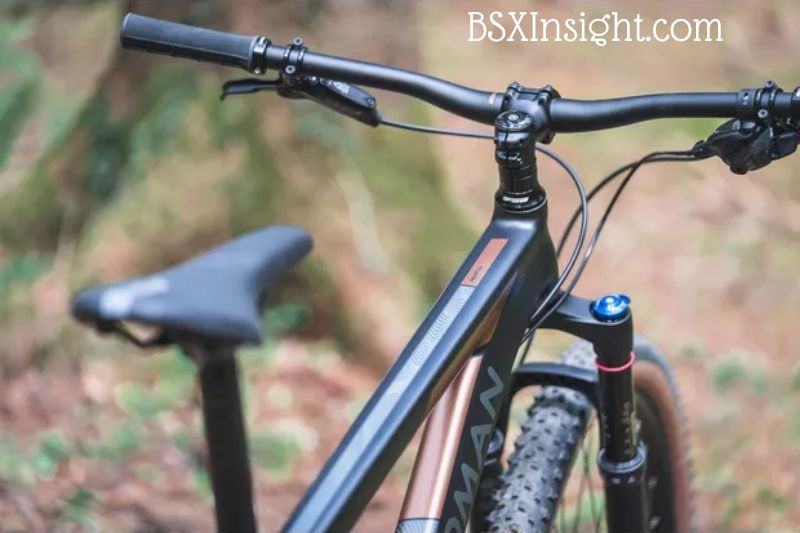
This construction method, in which the top and down tubes are carefully constructed for a better join with the head tube, is utilized by other well-known manufacturers.
The matching tube connections improve aesthetics while also lessening weld flex, one of the primary causes of alloy frame cracks.
The full-suspension MTR, in comparison, has a 6-series alloy frame packed with large, meaty tubes connected by fish-scale TIG welds. It is chunkier and appears tougher (although it may be a little more cumbersome).
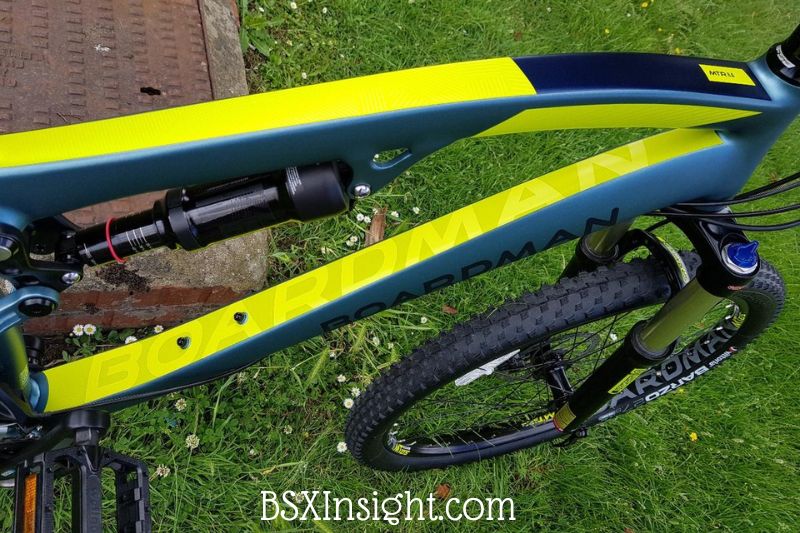
Both frames, according to Boardman, exhibit current geometry. The MHT has more laid-back steering, as opposed to the razor-sharp, edgy mentality of a pure-bred cross-country bike, as it is designed to straddle XC and trail riding.
Although the head angle of the hardtail is more upright at 68 degrees, the MTR is still slightly lazier at 66 degrees. The MHT’s steering is lighter and more responsive as a result of this crucial handling statistic, which is also a result of its shorter wheelbase.
The MTR can feel less responsive at the handlebars because it doesn’t pivot as much on the bottom of the front tyre and tends to keep pointing forward, but as soon as speeds increase, its steering is much less likely to get knocked off-line in rough terrain or tuck in abruptly on steeper downhill sections.
On the full-suspension bike, there is also a lot more space for movement. The size-large MHT places your hands 441mm from your feet, while the equivalent MTR increases to 475mm when looking at the reach figures of both frames (the horizontal distance from the center of the bottom bracket to the center-top of the head tube), which is the measurement that gives the best idea of how a bike will feel when you’re standing on the pedals.
The shorter hardtail frame places more rider weight forward on the bike for improved balance when getting out of the saddle, while the additional length makes the full suspension more stable.
The taller-top-tubed hardtail benefits from the lack of rear travel (and the potential for higher pedal strikes) with a lower BB height, which lowers your feet to the ground for more stability and better turning.
However, it strikes a decent balance, especially when combined with chainstays that are 5 mm shorter than those of the full-suspension bike. It is still not as low as on certain hardtails.
These increase the MHT’s agile, maneuverable ride experience by bringing the rear wheel closer to the rider.
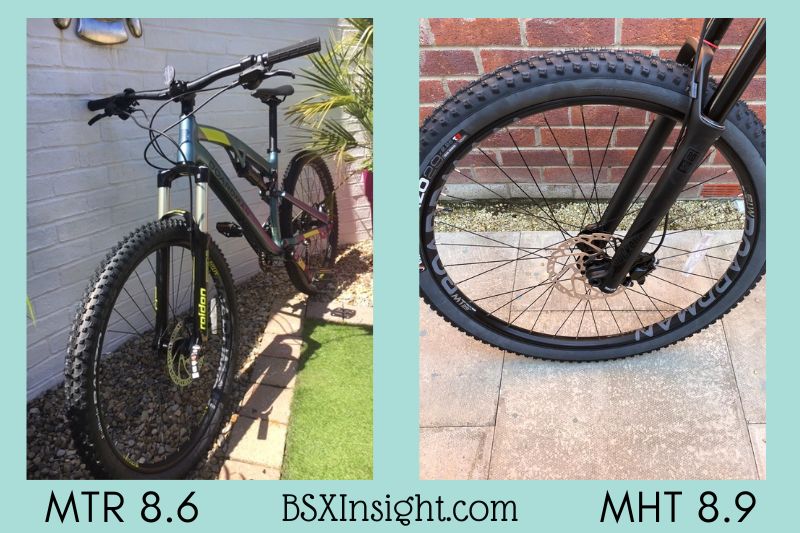
Through the use of a tried-and-true four-bar linkage, the MTR frame provides 145mm of rear-wheel travel.
Top companies like Specialized and Canyon choose this design because it keeps the suspension engaged when you need it most—when you’re slamming on the brakes while descending the hardest trails. Throughout, sealed bearings are specified for greater sensitivity.
The squared-off tubing at the back uses the most recent 148mm-wide Boost hub spacing (which allows room for a stronger wheel with a wider spoke brace angle). However, you can see where Boardman cut corners on the suspension budget because you receive a traditional quick-release (QR) skewer as opposed to the MHT’s sturdier and more reliable bolt-through axle.
With the purchase of a long-stroke RockShox shock, this money was wisely spent. It is propelled by a rocker link attached to the top tube, with just enough room for a water bottle underneath.
However, you cannot accommodate a full-size bottle as on the MHT since the bottle cage bosses are located higher up the down tube.
The large top and down tubes don’t need to be strengthened where they join the head tube, but there is a gusset bracing the seat tube to provide additional standover space and prevent the top tube from getting in the way when pulling forms. The saddle is one item that does get in the way of both Boardmans.
Both bikes lack a dropper seatpost, which would enable you to easily remove the saddle during descents by pulling a lever; this is an obvious initial improvement.
The Kit
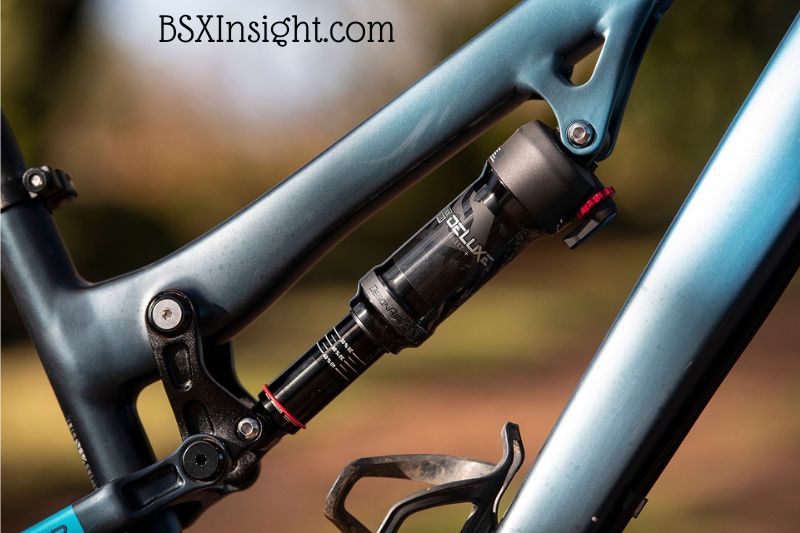
The air-sprung forks on both motorcycles may be easily adjusted for the rider’s weight. You probably won’t notice the 20mm difference in travel between the MHT 8.9’s RockShox Reba RL and the MTR 8.6’s cheaper SR Suntour XCR 34. The Reba’s movement is noticeably more controlled and smooth, soaking up bumps and refocusing for the next strike.
Although the Suntour fork is advanced enough to feature heavier, thicker alloy legs rather than the tiny steel ones found on many inexpensive full-suspension bikes, its QR axle is rather fiddly, which isn’t ideal if you need to remove the front wheel frequently.
The same adjustment choices are available on both: a rebound-damping dial and a progressive low-speed compression damping ‘lockout’, which tighten up the fork, so it doesn’t bob when pedaling vigorously on pavement or smoother fire roads.
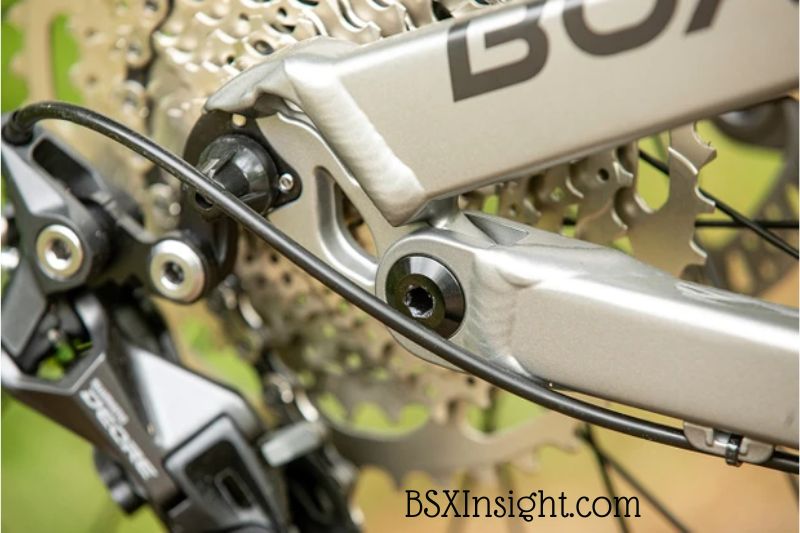
Here, the only shock is a specially-tuned RockShox Deluxe, which (at this price point) can only be adjusted for rebound damping. Since Boardman has skewed the damping range too much in favor of a sluggish return, we ultimately ran this totally open.
Rebounding more than a few times causes the shock to become significantly slower. This will probably be a problem for lighter riders running lower air pressures because the fork won’t be able to quickly rebound into place to manage subsequent collisions.
SRAM Level T brakes on the MHT 8.9 are more efficient and potent than Tektro HD-M285 brakes on the MTR 8.6, but neither gives a ton of top-end stopping power.
The upgraded specification of the hardtail also incorporates lighter, more contoured Boardman rims and better Formula hubs. These have the quickest-rolling, most expensive quad-compound graphene rubber blend Vittoria Barzo tires.
The Maxxis tyres are miles ahead once you ride somewhere where grip boosts confidence and traction, even if these roll considerably faster than the Maxxis Minions installed on the full-wider suspension’s (and heavier) wheels.
If you add moisture or roots that are off-camber to the equation, this is much more true.
Both bikes feature narrow-wide chainrings to stabilize their chains, but the MHT 8.9’s 12-speed SRAM SX Eagle drivetrain has two shifter clicks more than the MTR 8.6’s Shimano Deore drivetrain.
It may sound like a major thing to only have 10 gears as opposed to 12 (with a huge, incline-easing 50t largest cassette sprocket), but the Deore system is smoother and more upbeat overall.
Additionally, no testers experienced any problems climbing hills with the full-suspension bike’s 46t largest cog or excessive gear hops.
In fact, the selection of this component appears to be a lesson in wise spending. The shifting of the 12-speed SRAM configuration is outperformed by the superior 10-speed drivetrain, which has a high-quality Shimano HollowTech BB and sturdy Deore crank arms. When fitted into a frame with a sturdy rear end, the SX cranks feel a little flexy, especially if you use large flat pedals.
The Ride
The MHT 8.9 rides very smoothly; this is not an alloy hardtail that rattles your teeth, feels cheap, or is made of rock-hard material.

The frame stays on the path that the smooth Reba fork traces, even while traversing pretty chopped-up trail surfaces and recurrent roots. As long as you have the Vittoria tires inflated to no more than 20 psi, there won’t be any severe trail chatter or vibration to blur your vision or cause early hand and arm fatigue.
The Barzo tires’ tiny, pointed tread blocks allow you really buzz around on smoother trail centers and gravel bridleways, and they also cut into loam and mud nicely on more natural dry trails.
However, when ascending, there is more wheel spinning and a significantly less secure feeling overall than with the 145mm rear suspension and Maxxis tires on the MTR 8.6.
The hardtail’s speed advantage on flatter routes is therefore not as obvious as you might think. In contrast to the MHT 8.9, which wobbles and searches for traction, the full-suspension bike frequently allows you to pass through brief technical sections without dabbing.
Although the MTR 8.6’s mellower steering feels calmer and more balanced through challenging portions, its 68-degree head angle is unquestionably not crazy-steep for a trail/XC hardtail.

Additionally, the hardtail often feels less grounded and steady and is a little bit busier on more difficult routes.
Even having a better fork, the MHT 8.9 was less able to maintain smoothness when navigating narrow trail sections while riding at a local trail center where the tracks are seriously degraded.
Keeping some fluidity and rhythm over bumpy, rocky areas, where you’d anticipate the lighter steed to find pace more readily, is all that is required; we’re not talking about bombing downhill, either. However, the hardtail feels lighter and has more zip than the full-suspension bike on smooth bridleways and roads.
However, the MTR 8.6 excels at what we would refer to as “real” mountain biking (anything that a gravel bike can’t manage).
The MTR 8.6 smooths out rather large lumps and bumps and rides similarly to more costly trail bikes, giving you the confidence to let off the brakes and find some flow.
The pedaling qualities of the full-suspension bike are also good, allowing for even power delivery when you want to add some speed or wind back up the hill without any drama.
Compared to top-tier motorcycles, it has a less polished suspension that occasionally seems too smooth and dull on the ground. If you’re really pushing it, hard-charging riders could also notice that the frame is a little flexible and eager to fly through the first portion of its journey.
However, the rear shock’s soft-off-the-top design allows most novice or intermediate riders decent traction and comfort across challenging parts. The front suspension is functional, and the geometry is kicked back, giving you more time to respond as you ramp up the pace. This makes it much simpler to have fun and discover your own limitations.
We would always choose the full suspension from this combination for this reason, in the end. After all, for the majority of riders, mountain biking is all about tinkering around in corners and over bumps and berms.
Compared to the MHT 8.9’s sharper-feeling, more jangly, and traction-compromised ride, the MTR 8.6’s rear suspension and slacker geometry let you get sunk in and play on decent tracks with a ton more confidence and assurance.
The full-suspension bike costs £100 more than its more fashionable sister and isn’t perfect, but no bike at this price will ever be.
It’s really challenging to find a full-suspension competition in this price range that has such trail-taming geometry and a dialed ride. This is especially true now that Calibre’s acclaimed Bossnut is no longer offered.
How to Pick a Mountain Bike with Full Suspension
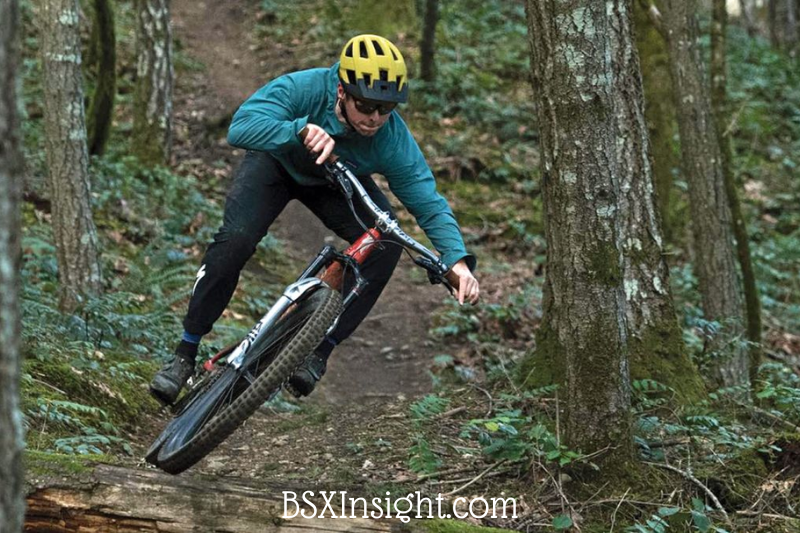
If a full-suspension bike appeals to you, you should be aware of key qualities that will make it easier for you to choose the ideal one. I usually take size into consideration when choosing my bike.
Being comfortable while driving requires the appropriate frame size. Make sure the reach of the bike is ideal for you so that you won’t experience sore arms after the excursion.
Weight is another factor that is equally significant to size. These two qualities complement one another. When I tried to push an ancient bike up a hill, I couldn’t deny how heavy it was. I, therefore, opted for a lighter bike while selecting my new one.
We strongly advise selecting a bike you can maneuver and manage easily, even when you’re not riding it.
A full-suspension bike can absolutely keep up with your active lifestyle if you’re a thrill-seeker like me because it travels more quickly through difficult trail parts because of its rear shock. If speed and price are important to you, go for coil shocks when purchasing a full-suspension bike. Air-sprung shocks, on the other hand, are more lightweight and tunable.
Rear suspension lockout, which enhances energy transmission during ascents, is another good feature.
Regarding price, you should be able to get the best full-suspension versions for between $1,500 and $3,000.
How To Choose a Hardtail Mountain Bike
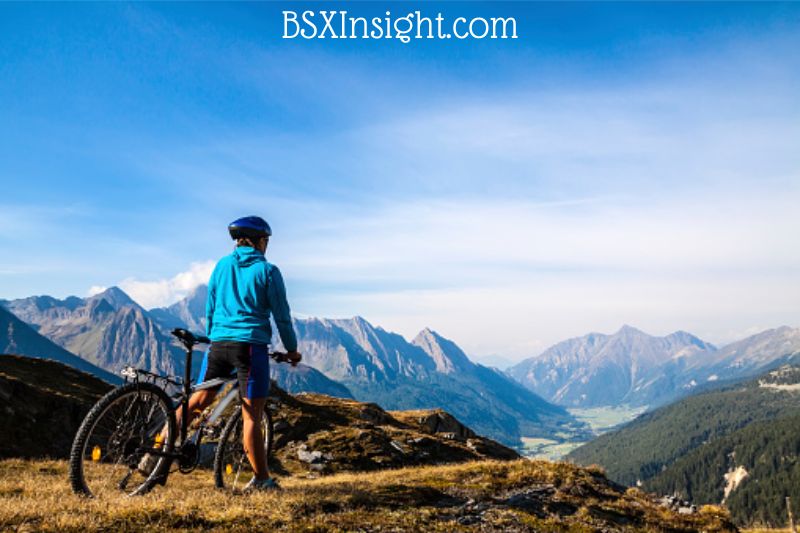
Aluminum or carbon fiber are popular frame materials for hardtail bikes. Carbon fiber is lighter, while aluminum is stronger. Choose the first option if your bike will be handled roughly.
It’s crucial to take the bike’s cost into account as well. You may frequently find a high-quality item that is lightweight and suitable for racing for a price of $2000 or more. Regular workouts and commuting should only require a lesser cost (under a grand).
Although buying motorcycles can be done on a budget, buying a $300 bike, for instance, may end up costing you more in maintenance in the long term.
The length of the fork legs should also be taken into account. These components typically range in length from 100mm to more than 180mm, with longer lengths being preferable for rocky terrains. Size your stanchions based on the terrain you’ll be riding on.
Finally, keep the wheel size in mind at all times. Beginners frequently choose wheels that are mid-size (about 27 inches). Overall, bike sizes vary between brands, so check sizing charts unique to each brand and speak with the sellers in person.
You can read more about some posts related: Cruiser vs mountain bike, Hybrid Bike Vs. Road Bike, gravel bike vs cyclocross
Are Full Suspension Bikes Better?
With a full-suspension mountain bike, you can take on tougher trails and rides more confidently. These bikes offer better traction, handling, and absorption of bumps, making them more comfortable and easier to control. They’re also great for riders of all skill levels, from casual to elite. However, full-suspension bikes come at a higher price tag and require more maintenance. The main downside to full suspension bikes is that they can be heavier than hardtail bikes. This can be a problem for some riders. A hardtail mountain bike may be more suitable if you love to ride but hate rough roads.
FAQs
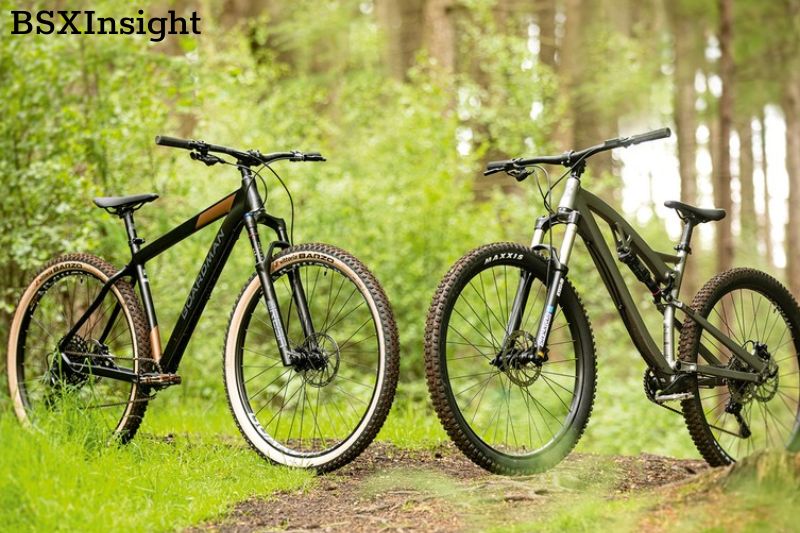
What are the pros and cons of hardtail vs. full suspension?
Hardtails and full-suspension bikes. Hardtails are cheaper and more durable.
Do I really need a mountain bike with full suspension?
To put it simply, if you’re more interested in riding off-road trails and more tricky terrain and want to add speed, confidence, and comfort as you push your boundaries, you might want to get a full-suspension bike.
What makes hardtails superior?
Hardtail bikes typically perform best on slower, narrower routes with more traction provided by the dirt. Hardtails frequently offer more direct, engaging riding on less challenging terrain. When climbing and sprinting, the stiff back end provides excellent power transfer to the rear tire.
Conclusion
Knowing the distinctions between a hardtail and a full-suspension mountain bike enables you to decide which model is best for your next adventure.
In this manner, you can ride the entire time comfortably and never have to worry about getting a bike that will work for your journeys.
Last update on 2024-04-18 / Affiliate links / Images from Amazon Product Advertising API

